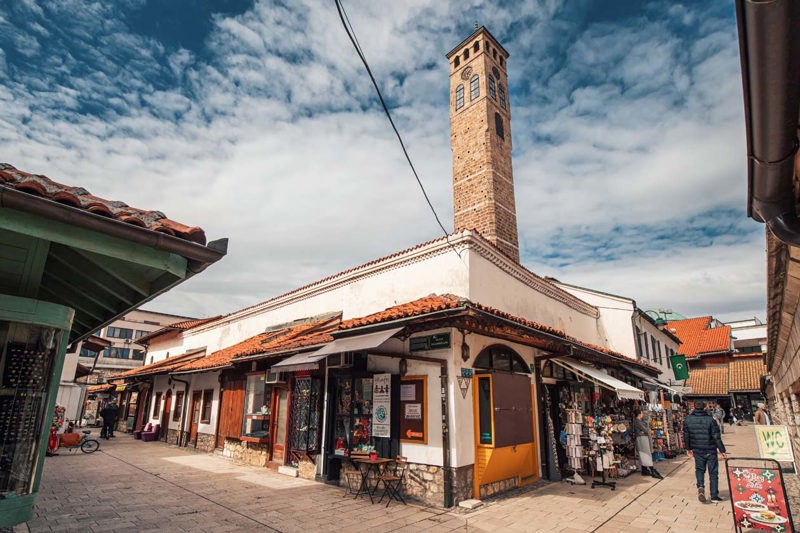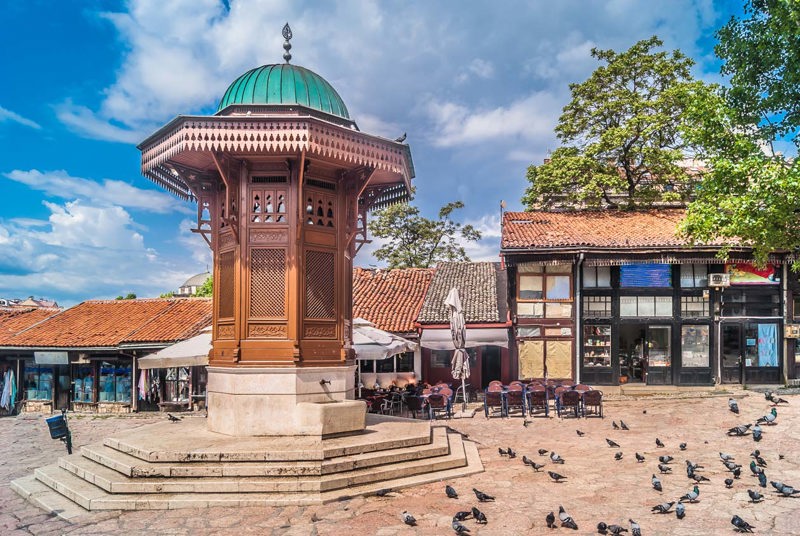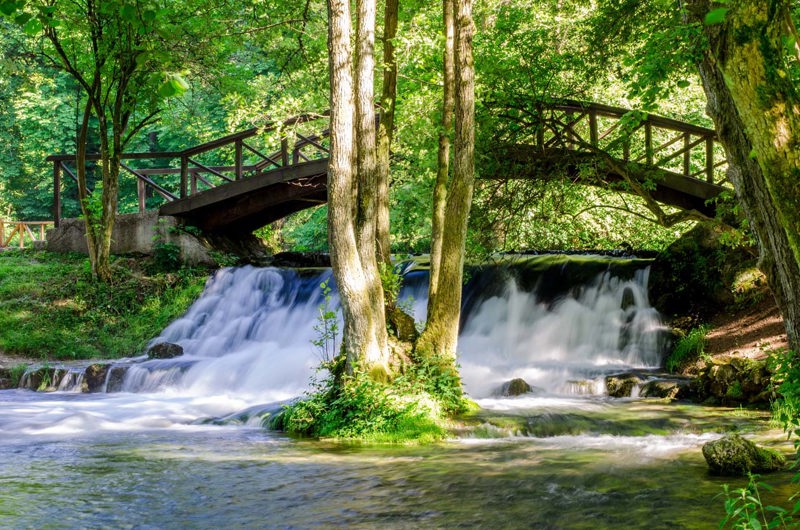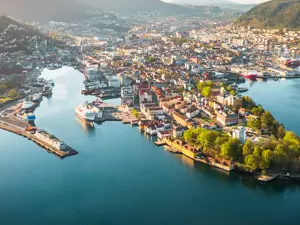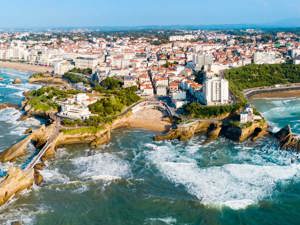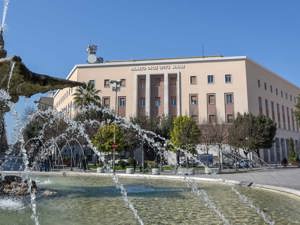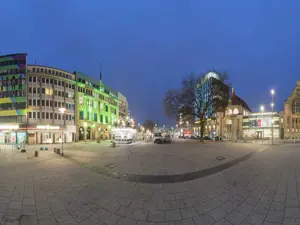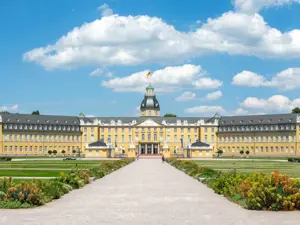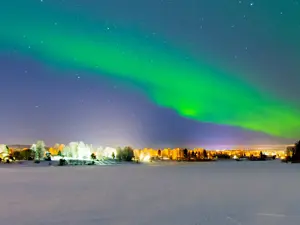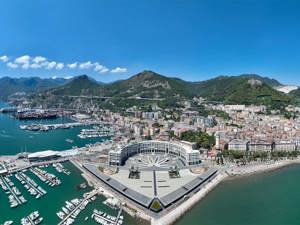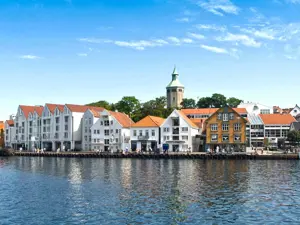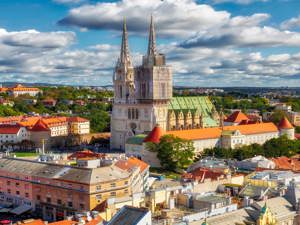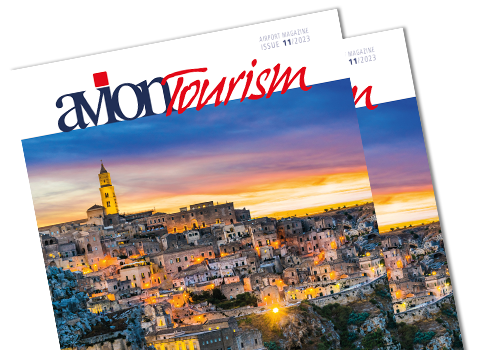The historical and cultural heart of the Balkans
Sarajevo, the capital of Bosnia and Herzegovina, is located in the valley of the Miljacka River, surrounded by the mountains of the Dinaric Alps. It is a city with a rich history and an exceptionally varied culture. Blending Oriental and Western influences, it offers visitors a unique charm and an unforgettable experience that weaves together past and present.
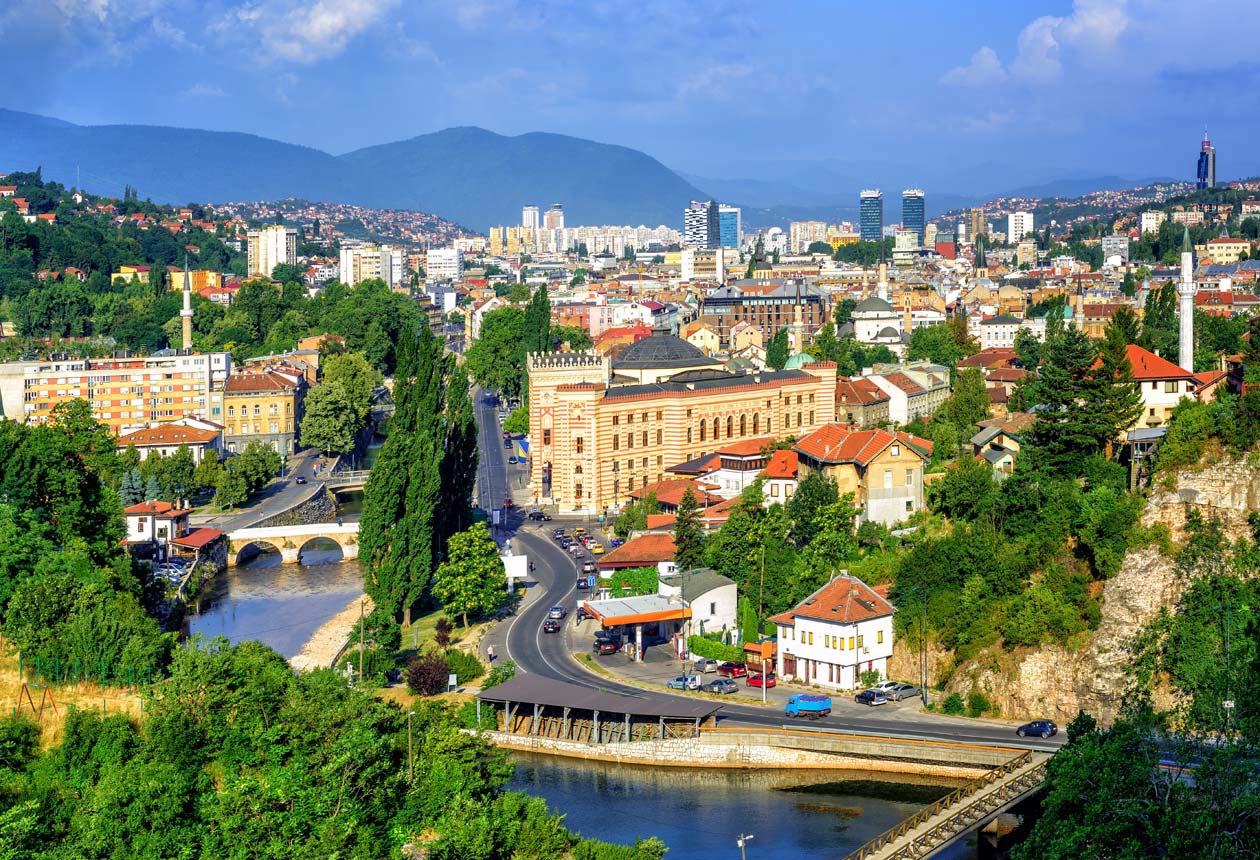
Sarajevo. Photo: Copyright © Sisterscom.com / Depositphotos
Sarajevo's history dates back to 1461 when it was founded by the first Bosnian governor, Ishak-beg Isaković (Ishak Bay Isaković), quickly becoming an important urban center of the Ottoman Empire in Europe. The Baščaršija district, the historic heart of the city, symbolizes Ottoman influence with its mosques, traditional bazaars, and ancient tea houses. Over the centuries, the city has also experienced a significant Austro-Hungarian influence, visible in its architecture and infrastructure. However, Sarajevo is perhaps best known for its role in the 20th century, particularly for the assassination of Archduke Franz Ferdinand in 1914, an event that triggered World War I, and for the siege during the Bosnian War in the 1990s, one of the most tragic periods in its history.

Cathedral of the Sacred Heart in Sarajevo. Photo: Copyright © Sisterscom.com / Depositphotos
Sarajevo boasts several must-see tourist attractions, starting with the old town Baščaršija, accessible from Ferhadija Street and leading to Markale Market Square and the Cathedral of the Sacred Heart with the Monument to John Paul II.
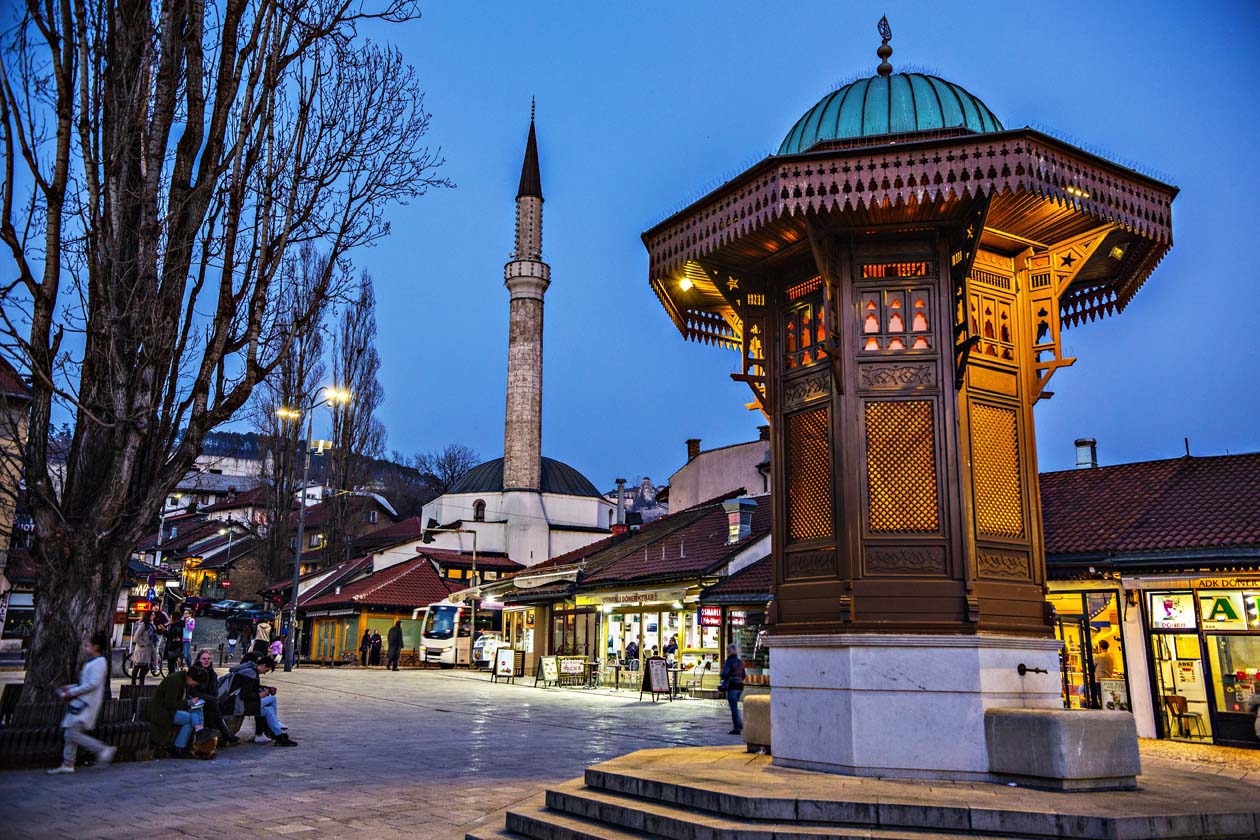
Sebilj Fountain in Sarajevo. Photo: Copyright © Sisterscom.com / Depositphotos
The vibrant center of Sarajevo is truly Baščaršija, the Ottoman bazaar, where one can savor the essence of the city among craft shops, cafés, historic churches, and mosques, such as the ancient Orthodox Church, the Emperor's Mosque, Ali Pasha Mosque (Alipašina Mosque), and the Gazi Husrev-beg Mosque from 1530, one of the most impressive in the country, adjacent to the 30-meter tall Sahat Kula Clock Tower and the Sebilj Fountain from 1753, one of Sarajevo's symbols.
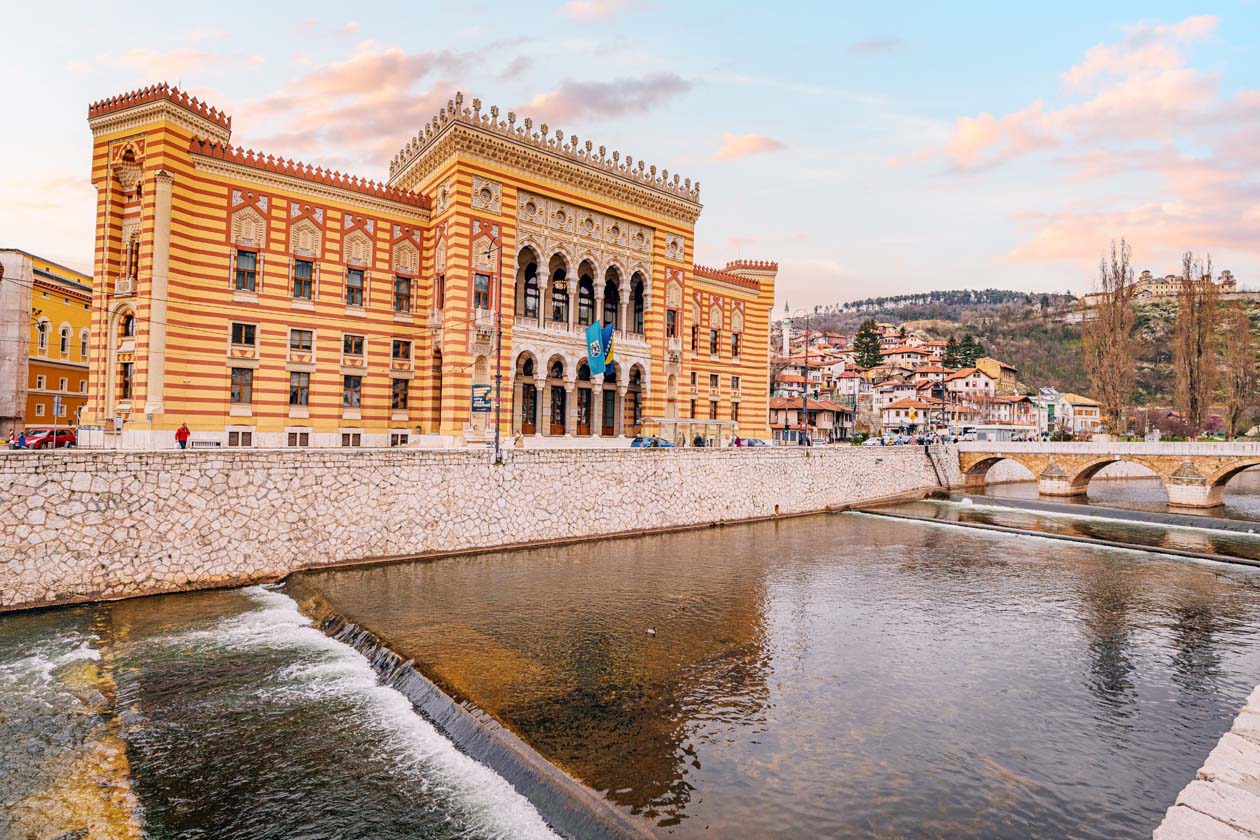
Sarajevo City Hall. Photo: Copyright © Sisterscom.com / Depositphotos
Particularly interesting architecturally in the old city is also the Sarajevo City Hall, renovated in 2014, the Alifakovac district, and Kazandžiluk Street, one of the city's oldest streets with artisan shops that produce copper objects.

Latin Bridge in Sarajevo. Photo: Copyright © Sisterscom.com / Depositphotos
Not far away, there is the Latin Bridge (atinska ćuprija) on the Miljacka River, where Archduke Franz Ferdinand of Austria was assassinated in 1914, an event that marked the beginning of World War I. From here, one can continue to visit several important city museums. Near the bridge is the Sarajevo 1878-1918 Museum and the Sarajevo Tunnel (also known as the "Tunnel of Hope" because it connected the city to Sarajevo Airport during the years of siege, providing a vital connection to the outside world), which offer insights into the city's recent history, while the National Museum of Bosnia and Herzegovina houses the Sarajevo Haggadah, one of the world's oldest Jewish manuscripts.
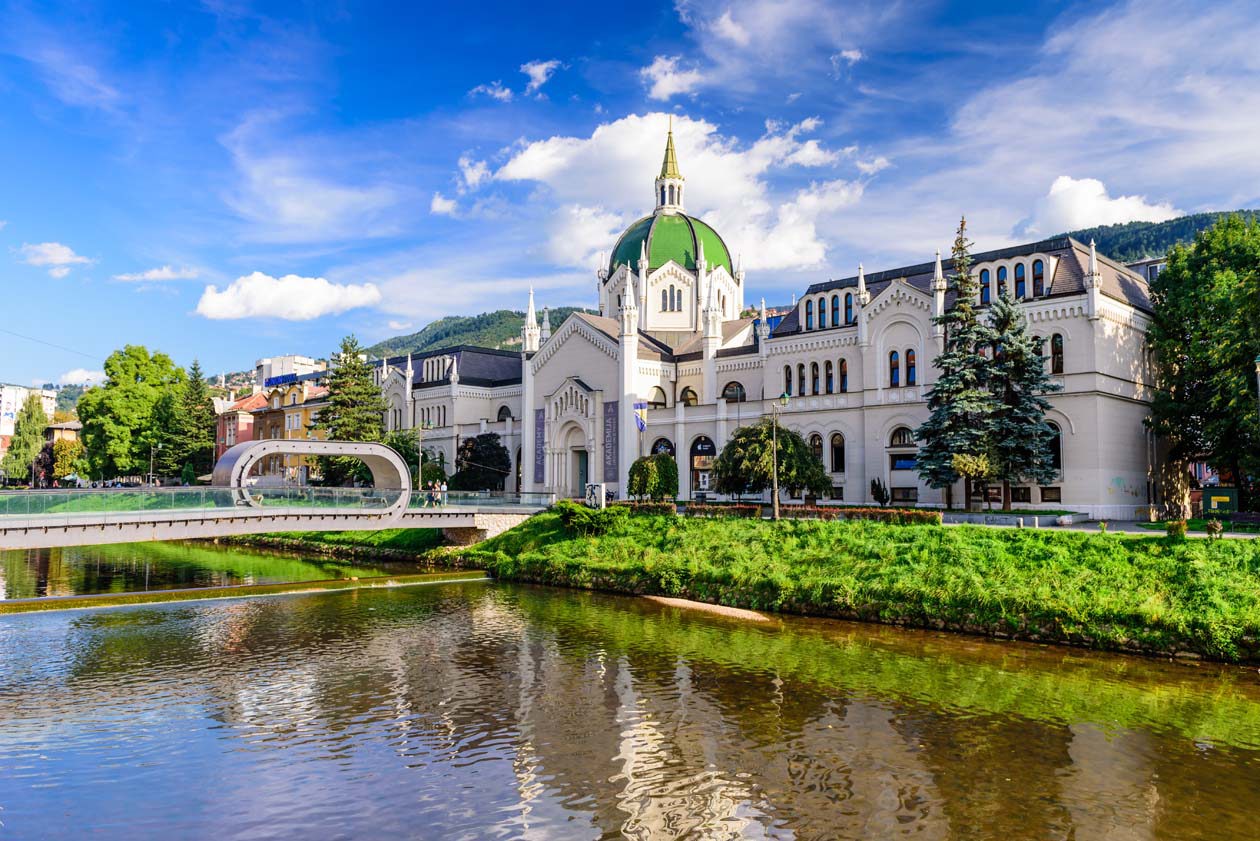
Academy of Fine Arts and Miljacka River in Sarajevo. Photo: Copyright © Sisterscom.com / Depositphotos
Strolling along the Miljacka River allows one to relax while admiring various examples of Austro-Hungarian architecture, such as the imposing building of the Academy of Fine Arts. Meanwhile, for a breathtaking view of the city, one can take the cable car to the top of Mount Trebević, from where the urban panorama set against green mountains can be observed.
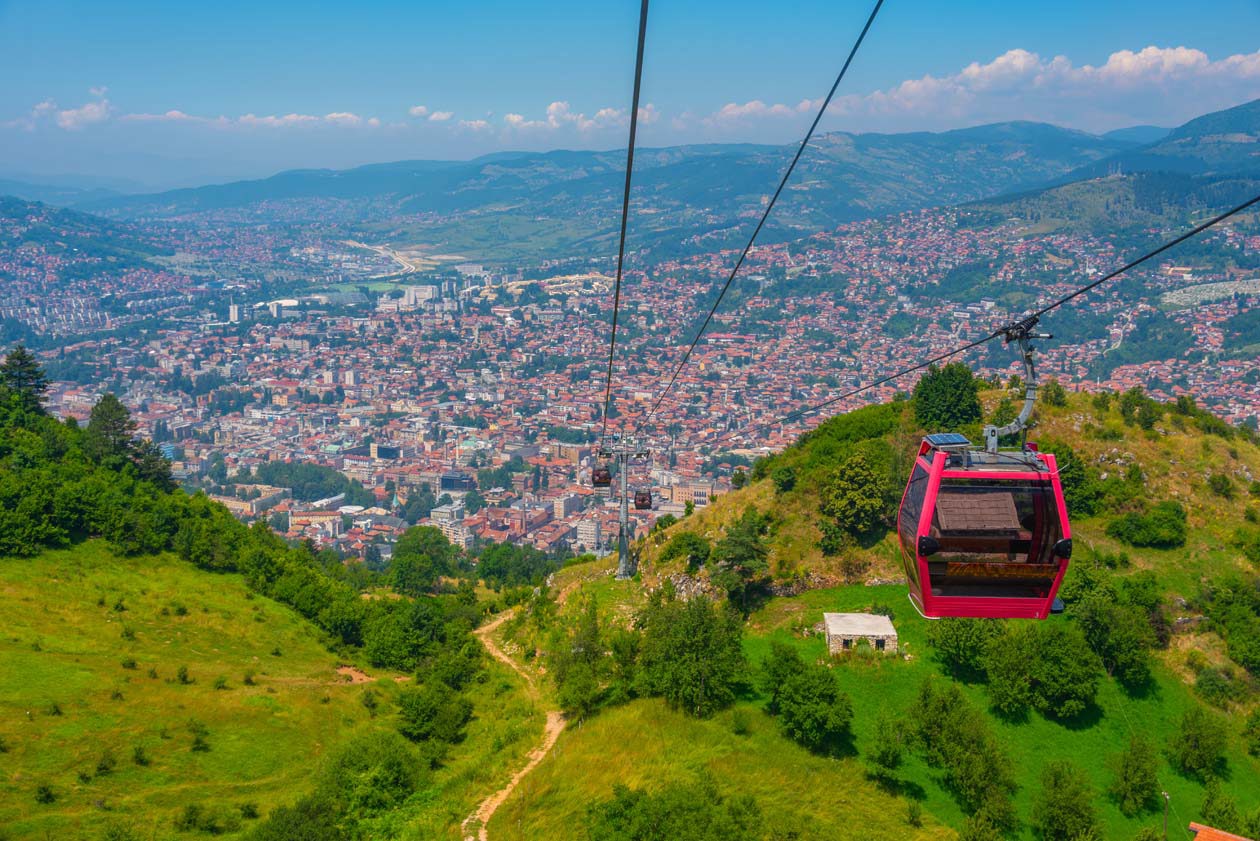
Funivia che porta fino alla cima del Monte Trebević. Foto: Copyright © Sisterscom.com / Depositphotos
About 40 km from Sarajevo, nature lovers can visit the famous Middle Bijambare Cave in the Bijambare speleological area, a protected natural site ideal for outdoor picnics, hunting, fishing, hiking, and speleological research. Or, about 25 km from Sarajevo, the Bjelasnica and Igman Mountains, which are very popular winter locations for the ski slopes of Bjelasnica that start from the highest peak (2067 meters) and end at Babin do (1266 meters).
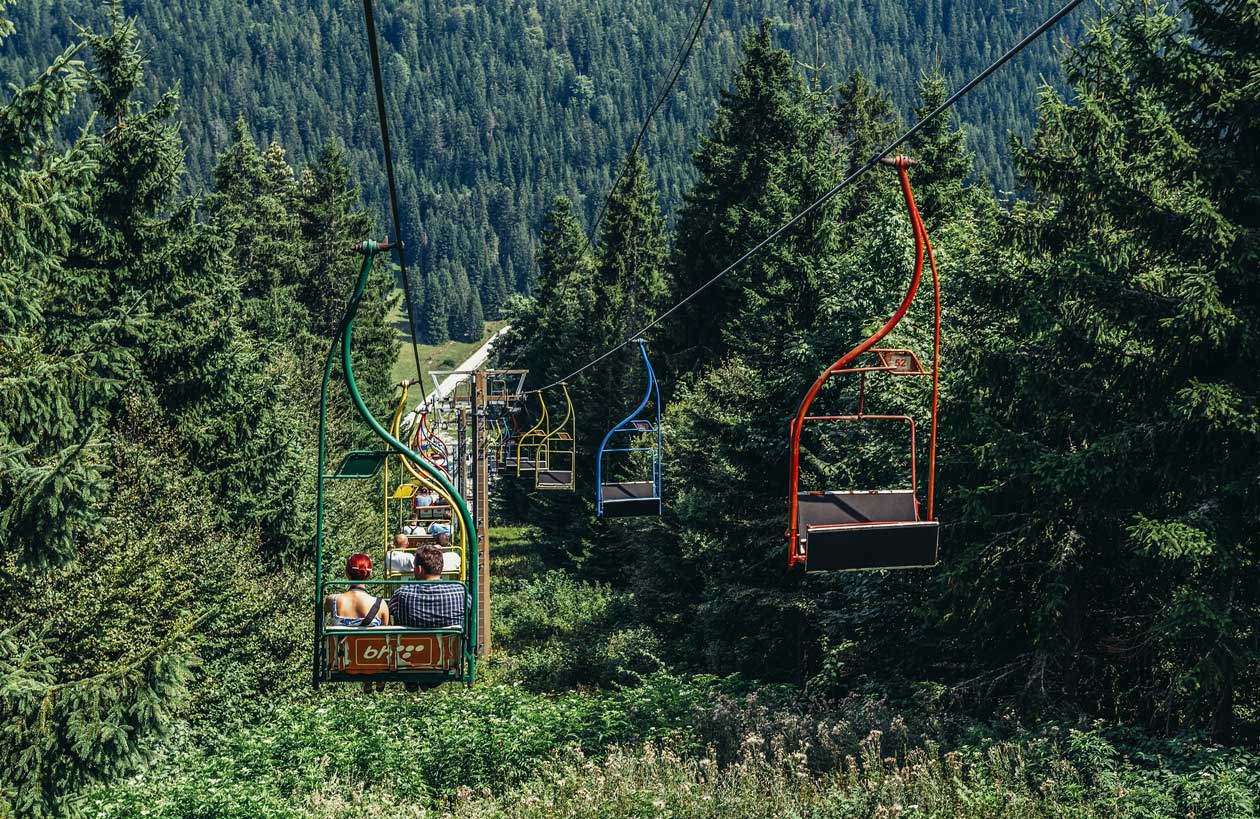
Ski lifts on the Igman mountain near Ilidza, a few kilometers from the capital Sarajevo. Photo: Copyright © Sisterscom.com / Depositphotos
Sarajevo's Cuisine
Completing the experience of the city is the local gastronomy. Sarajevo's cuisine is a delightful example of culinary fusion. One cannot leave the city without trying čevapi, spiced meat sausages served with pita bread and onions.

čevapi. Photo: Copyright © Sisterscom.com / Depositphotos
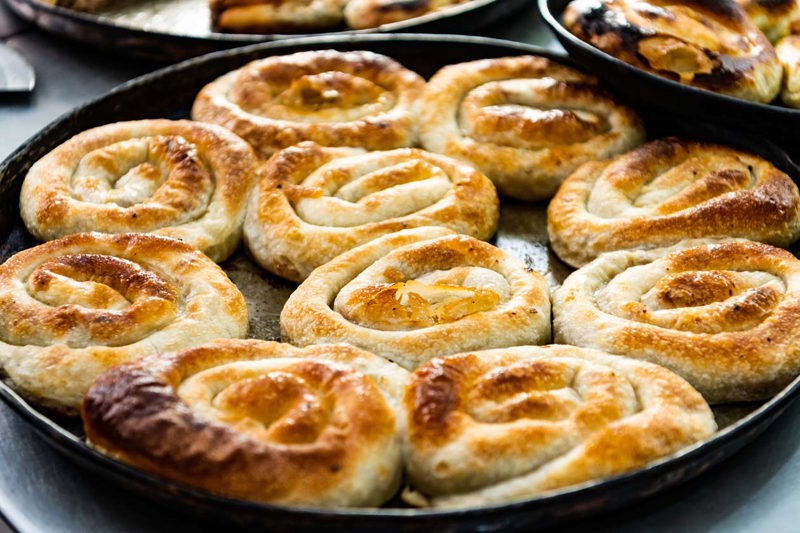
burek. Photo: Copyright © Sisterscom.com / Depositphotos

baklava. Photo: Copyright © Sisterscom.com / Depositphotos
Other typical dishes include stuffed vine leaves known as japrak, klepe (minced meat dumplings), burek (meat-filled savory pie), bosanski lonac (a traditional stew that offers a genuine taste of Bosnian cuisine), and for dessert, baklava (a legacy of the long Ottoman rule), as well as tufahija (poached stuffed apple) and hurmašice (butter cookies). Typical restaurants where one can taste traditional dishes are found along Bravadžiluk Street, a gastronomic paradise in the historic center of Baščaršija, where some of Sarajevo's most famous grocery stores are also located.
Text by Nicole Villa
Avion Tourism Magazine
Photos and visuals for editorial use only: Copyright © Sisterscom.com / Depositphotos
All rights reserved. Reproduction prohibited. Copyright © Sisterscom.com
Tourism Board
www.visitsarajevo.ba
Partnership with Booking.com
Where to sleep in Sarajevo
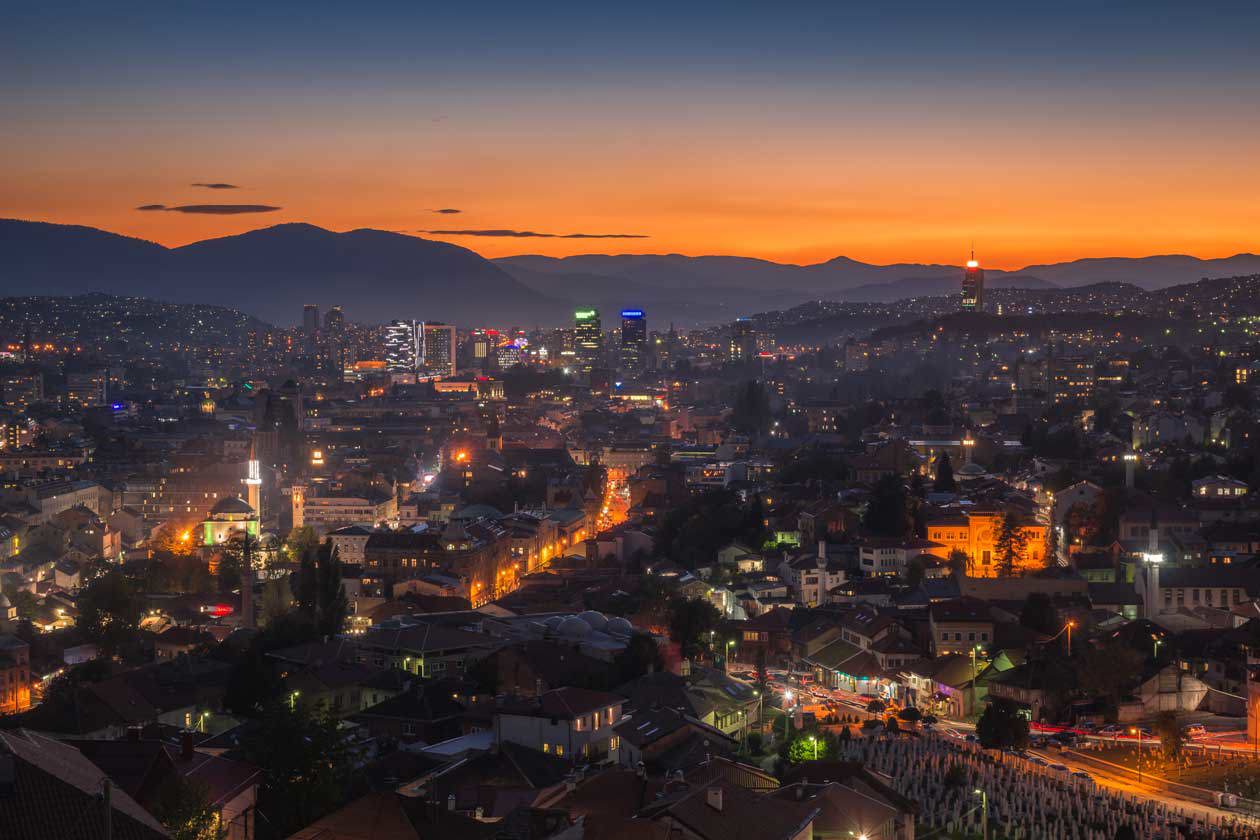
Sarajevo. Photo: Copyright © Sisterscom.com / Depositphotos
Sarajevo is a welcoming city and offers different possibilities for accommodation.
To find the ideal hotel and the best offers you can do a search for the stars but also for districts or landmarks.
STARS
Hotels for stars, differentiated by type of services:
HOUSES, B&Bs, HOSTELS
Stays in houses, B&Bs and hostels:
DISTRICTS
Hotels in the districts
LANDMARKS
LANDMARKS
Hotel in tourist areas
Hotels in the region
AIRPORT
Hotels near the airport
WHERE TO GO IN SARAJEVO
Tourist attractions in Sarajevo
Baščaršija, the Old Town of Sarajevo
Here, you can find Sarajevo's oldest streets, filled with traditional artisan shops, many hookah bars, and typical restaurants where you can stop to taste local dishes. In Baščaršija, you can visit the Sarajevo City Hall, the Alifakovac district, the ancient Orthodox Church, and the Bey Mosque. Baščaršija is also home to the Sevdah Art House Museum, a pillar of Bosnian music.
Bey Mosque
The Gazi Husrev-beg Mosque was built by Gazi Husrev Beg (Gazi Husrev Bey), a Bosnian administrator and builder. In 1530, he constructed this monumental Islamic mosque in Bosnia and Herzegovina along the Miljacka River. The Bey Mosque, together with the mekteb, the wudu inn, two octagonal mausoleums, and the clock tower, forms the complex of the "čaršija". The clock tower (Sahat kula) is approximately 30 meters tall.
Clock Tower (Sahat kula)
The Sarajevo Clock Tower is located next to the Gazi Husrev-beg Mosque and stands 30 meters tall. Declared a National Monument of Bosnia and Herzegovina in 2006, the clock displays lunar time with its hands pointing to 12 at sunset, the time for the Maghrib Muslim prayer.
Sebilj Fountain
The Sebilj Fountain is a symbol of Sarajevo and was built in 1753 by Mehmed Pasha Kukavica. The Sebilj is an Ottoman-style wooden fountain in the center of Baščaršija Square. According to local legend, anyone who drinks from the fountain will one day return to Sarajevo.
 City Hall of Sarajevo. Photo: Copyright © Sisterscom.com / Depositphotos
City Hall of Sarajevo. Photo: Copyright © Sisterscom.com / DepositphotosCity Hall of Sarajevo
This is a grand architectural project by Alexander Wittek that was completed in 1896 with a glass dome. During the siege of Sarajevo, the city hall was damaged and renovated in 2014. It is in a pseudo-Moorish style and was one of the most expensive projects of the Austro-Hungarian Empire at the time.
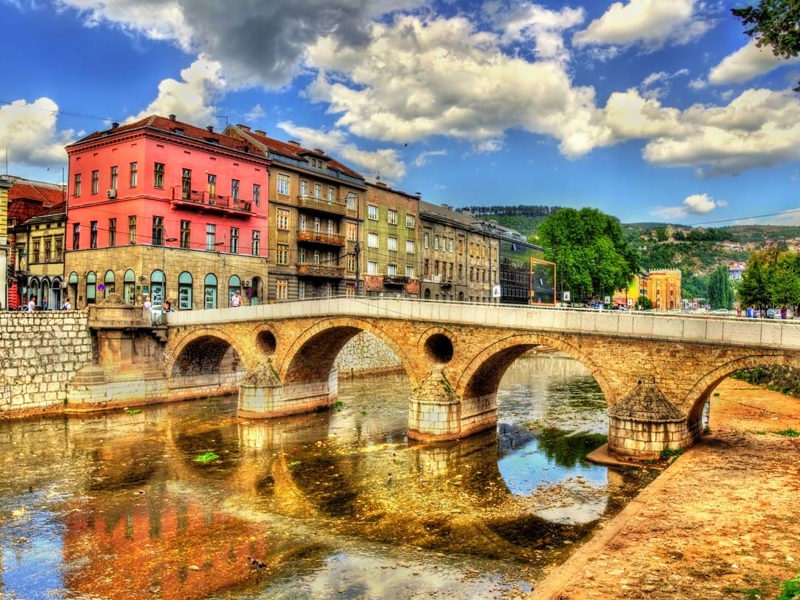 Latin Bridge in Sarajevo. Photo: Copyright © Sisterscom.com / Depositphotos
Latin Bridge in Sarajevo. Photo: Copyright © Sisterscom.com / DepositphotosLatin Bridge in Sarajevo
Latinska ćuprija (Latin Bridge) takes its name from Latinluk, the alley on the right that was once populated by a colony of merchants and trading agents from Dubrovnik. Between the Latin Bridge and the next bridge on the left bank of the Miljacka is the Music Pavilion, built on the former Atmejdan racecourse.
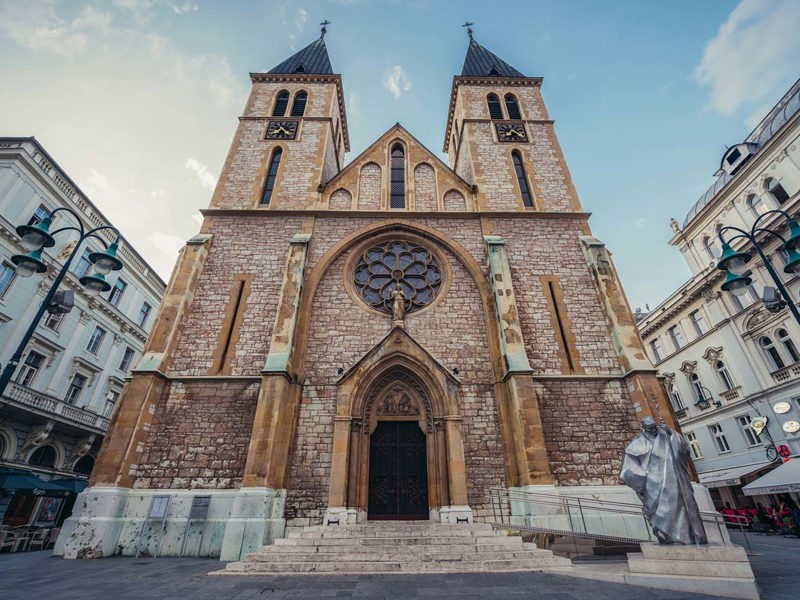 Cathedral of the Sacred Heart in Sarajevo. Photo: Copyright © Sisterscom.com / Depositphotos
Cathedral of the Sacred Heart in Sarajevo. Photo: Copyright © Sisterscom.com / DepositphotosCathedral of the Sacred Heart
The Cathedral of the Sacred Heart in Sarajevo was designed by architect Josip Vancaš. The monument to Pope John Paul II, in front of the cathedral, was erected in 2014 and created by Hrvoje Urumović, a sculptor from Sarajevo. Next to the Cathedral is a private gallery 11/07/95 that tells the story of Srebrenica. The Catholic Cathedral was built at the beginning of the Austro-Hungarian era.
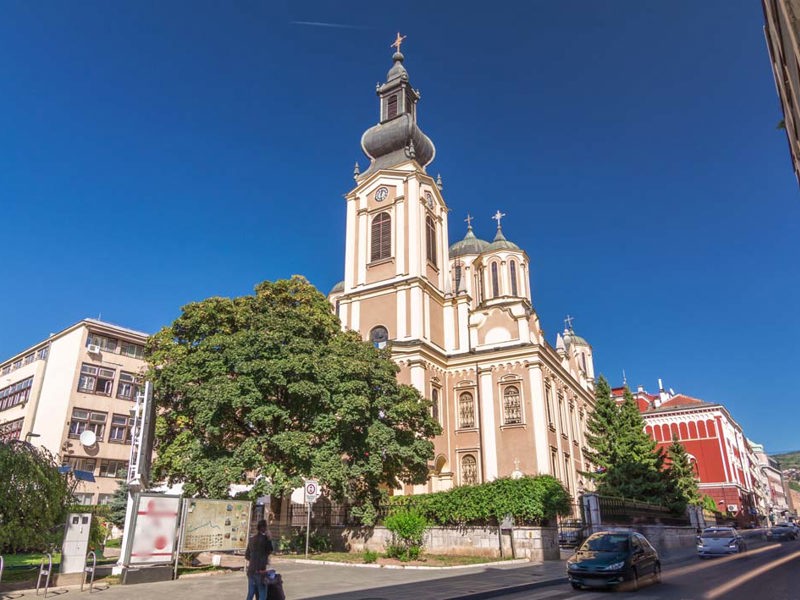 Ancient Orthodox Church of Sarajevo in Sarajevo. Photo: Copyright © Sisterscom.com / Depositphotos
Ancient Orthodox Church of Sarajevo in Sarajevo. Photo: Copyright © Sisterscom.com / Depositphotos Ancient Orthodox Church of Sarajevo
The Ancient Orthodox Church of Sarajevo was completed in the last years of Ottoman rule in 1874. The church of Saints Archangels Michael and Gabriel is located near Baščaršija and features a medieval Serbo-Byzantine style with interior wood sculptures and icons.
Museums of Sarajevo
 Sarajevo Museum 1878-1918. Photo: Copyright © Sisterscom.com / Depositphotos
Sarajevo Museum 1878-1918. Photo: Copyright © Sisterscom.com / DepositphotosSarajevo Museum 1878-1918
The Sarajevo Museum 1878-1918 is located near the Latin Bridge in the center of Sarajevo. Since 1953, the Sarajevo Assassination Museum has been part of the Sarajevo Museum, which displays the assassination of Archduke Franz Ferdinand of Austria in 1914. Today it is called the Sarajevo Museum 1878-1918 and represents the period of Austro-Hungarian administration in Sarajevo, including the 1914 assassination.
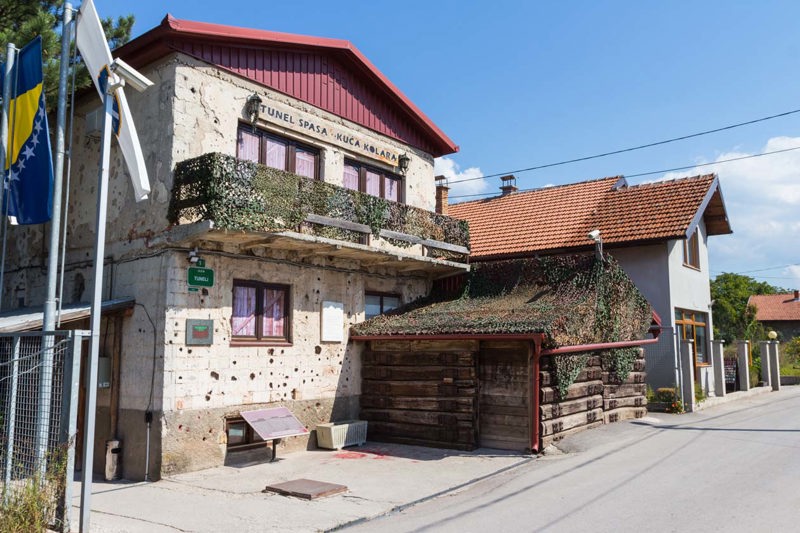 War Tunnel of Sarajevo. Photo: Copyright © Sisterscom.com / Depositphotos
War Tunnel of Sarajevo. Photo: Copyright © Sisterscom.com / Depositphotos War Tunnel of Sarajevo
The War Tunnel of Sarajevo is now a Museum. It is located near Ilidža and measures 25 meters, out of a total of 800 meters of tunnel dug under the airport during the siege of Sarajevo when it was used to supply food and arms to the city. The tunnel was built during the 1,425-day siege of Sarajevo (from 1992 to 1995) to connect two free territories. The entrance and exit of the tunnel are two houses on opposite sides of the airport.
 War Childhood Museum in Sarajevo. Photo: Copyright © Sisterscom.com / Depositphotos
War Childhood Museum in Sarajevo. Photo: Copyright © Sisterscom.com / DepositphotosWar Childhood Museum
The War Childhood Museum in Sarajevo was opened in 2017 and, as a historical museum, offers a collection of personal items, stories, audio and video testimonies, photos, letters, drawings, and other documents that illustrate the unique experiences of children growing up during the war period in Bosnia. The museum's founder is Jasminko Halilović, who wrote a book based on childhood memories of his peers during the civil war, published in 2013, which then inspired the opening of this museum.
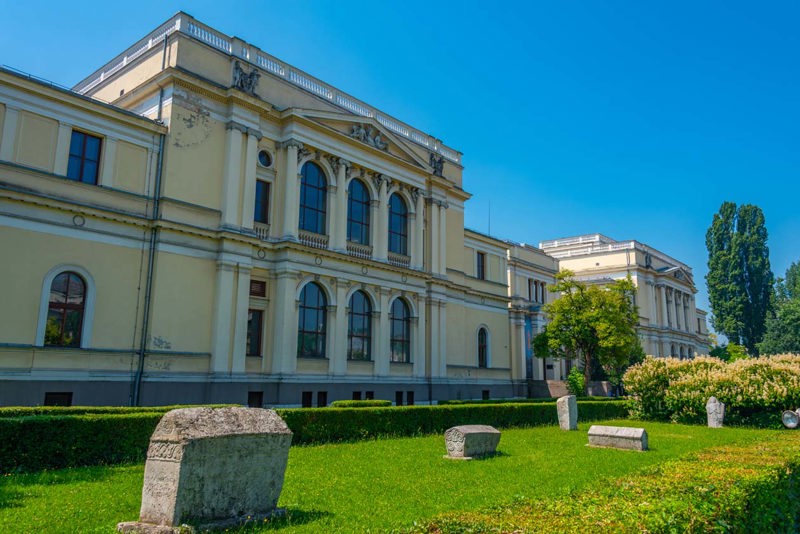 Historical Museum of BiH in Sarajevo. Photo: Copyright © Sisterscom.com / Depositphotos
Historical Museum of BiH in Sarajevo. Photo: Copyright © Sisterscom.com / Depositphotos Historical Museum of BiH
In the National Museum of Bosnia and Herzegovina, located in a Yugoslav modernist architecture building (architects Boris Magaš and Edo Šmidhen), you can see the reconstruction of the life of Sarajevo citizens during the siege of the last war. The most precious piece of the museum's collection is a medieval codex known as the Sarajevo Haggadah, dating back to 1350 and brought to Sarajevo by Sephardic Jews from Spain. The museum preserves a stained glass window by Vojo Dimitrijević: "Death to Fascism - Freedom to the People."
Excursions in Sarajevo and surroundings
Ilidža Thermal Spa
The Ilidža Thermal Spa is located in the spa town of Ilidža, on the outskirts of Sarajevo. The spa center includes an aquatic park with outdoor and indoor heated pools. The spa complex is connected to a spring of the Bosna river through Velika Aleja Avenue, leading from the hotel complex and spa towards the springs. The park paths are ideal for walking or cycling.
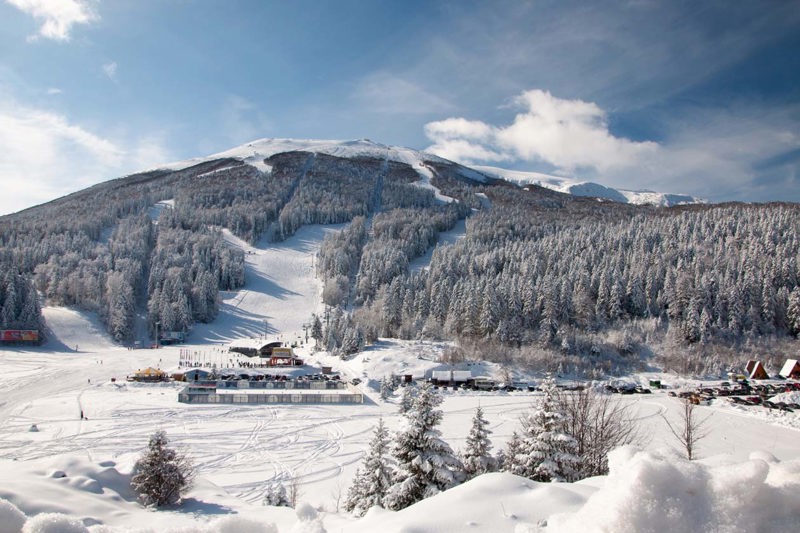 Bjelasnica Mountains Photo: Copyright © Sisterscom.com / Depositphotos
Bjelasnica Mountains Photo: Copyright © Sisterscom.com / Depositphotos Bjelasnica and Igman
The Bjelasnica and Igman mountains are popular winter locations 25 km from Sarajevo. The mountain range extends over 300 kilometers. Bjelasnica and Igman have about 25 kilometers of ski slopes, hotels, and other services. The ski slopes of Bjelasnica start from the highest peak (2067 meters) and end at Babin do (1266 meters). The Meteorological Observatory was built at the top of the mountain in 1984.
Partnership with GetYourGuide
Tours and excursions
You might be interested in
Other destinations
Airports nearby Sarajevo




